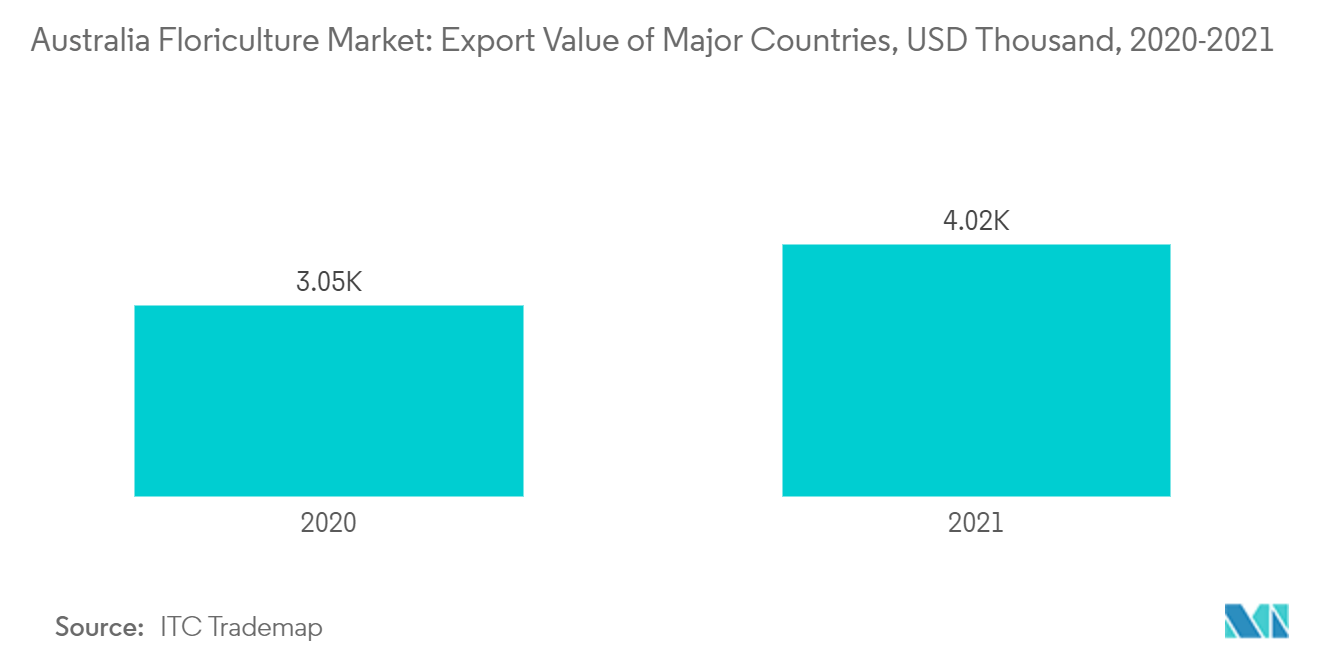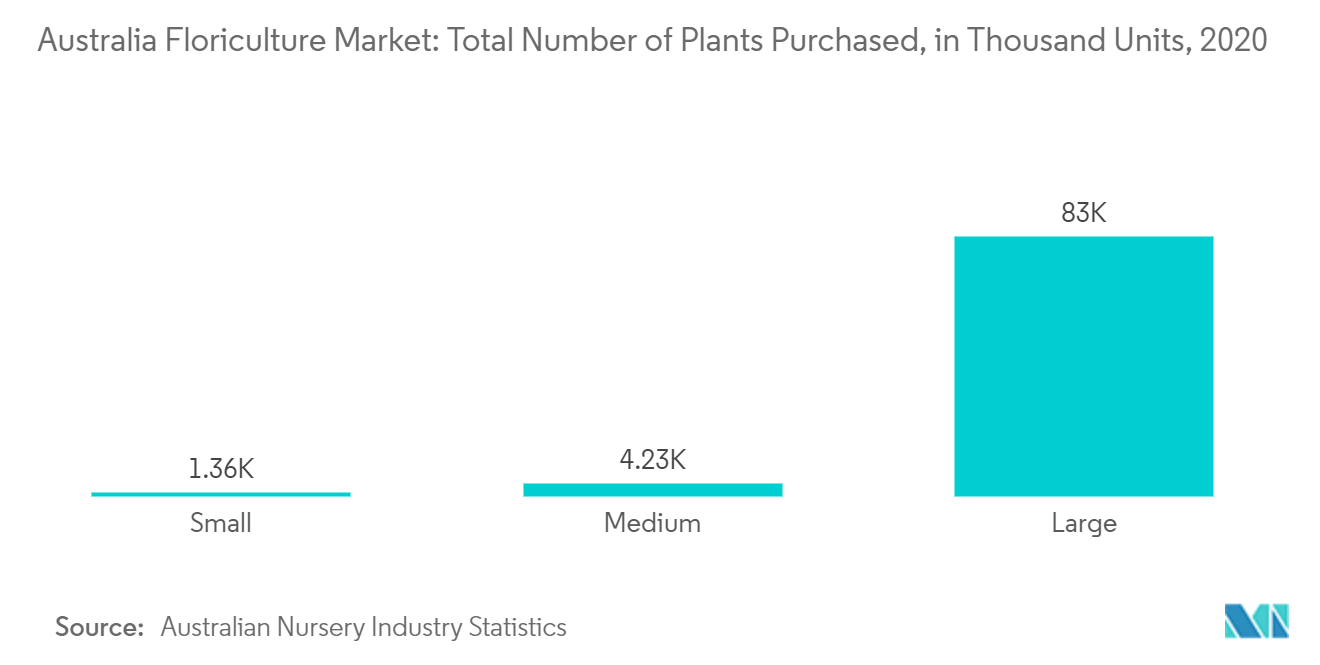Market Trends of Australia Floriculture Industry
Growing Export of Potential for the Cut Flowers
- Australia is one of the top exporters of cut flowers across the world. The flower market in Australia is dynamic, and this growing industry is defined by three major components: growers, wholesalers, and retailers. The country is the largest producer of cut flowers and a critical exporter to Asia-Pacific countries.
- Thus, the increased demand for cut flowers globally is driving the export market in Australia. The main export destination of floriculture during the year 2021 are Japan, the United States, China, the Netherlands, and South Korea.
- Japan remains one of the largest single markets for Australian-grown flowers. Most flowers are distributed to Japan through the auction system. Factors such as the availability of various native flowers and protea species offer the best prospects for the growth of exports to Japan.
- According to the ITC Trademap, in 2021, Australia exported 10,446 thousand units of cut flowers and flower buds suitable for bouquets or ornamental purposes worldwide, supporting the growth of Australian exports.

Nursery Stocks Dominates the Market
- Nursery stocks include all plants, trees, shrubs, vines, buds, vegetable, and field crop plants, annual flowering plants, aquatic plants, corms, tubers, bulbs, cuttings, grafts, and scions thereof, grown or kept for propagation for sale and distribution. Nursery stocks do not include seeds, lawn or pasture grasses, cut flowers, and ferns.
- Cut foliage (greens) are specifically exempted from nursery stock classification for registration purposes when free from injurious plant pests. The country is very limited in producing cut flowers, so the requirement for nursery stocks is less. However, there are few nurseries in the country providing stocks to the customers.
- According to the Department of Agriculture, water, and Environment, in May 2020, importers importing nursery stocks must complete the import notification. These restrictions from the government reduce the imports to some extent and create demand for the local production of nursery stocks.
- There are 1650 nursery businesses in the country, employing up to 23,300 people. The nursery industry is the largest contributor to the Australian Horticulture Industry at 17% of the total value of Australian horticulture. The nursery industry outperforms the agriculture industry when it comes to workplace diversity. According to the Nursery industry statistics 2019-2020 stated that a slightly (but not statistically significantly) higher proportion of production businesses purchased plants to be immediately resold in 2019-20 (41%) than in the previous financial year (34%).

